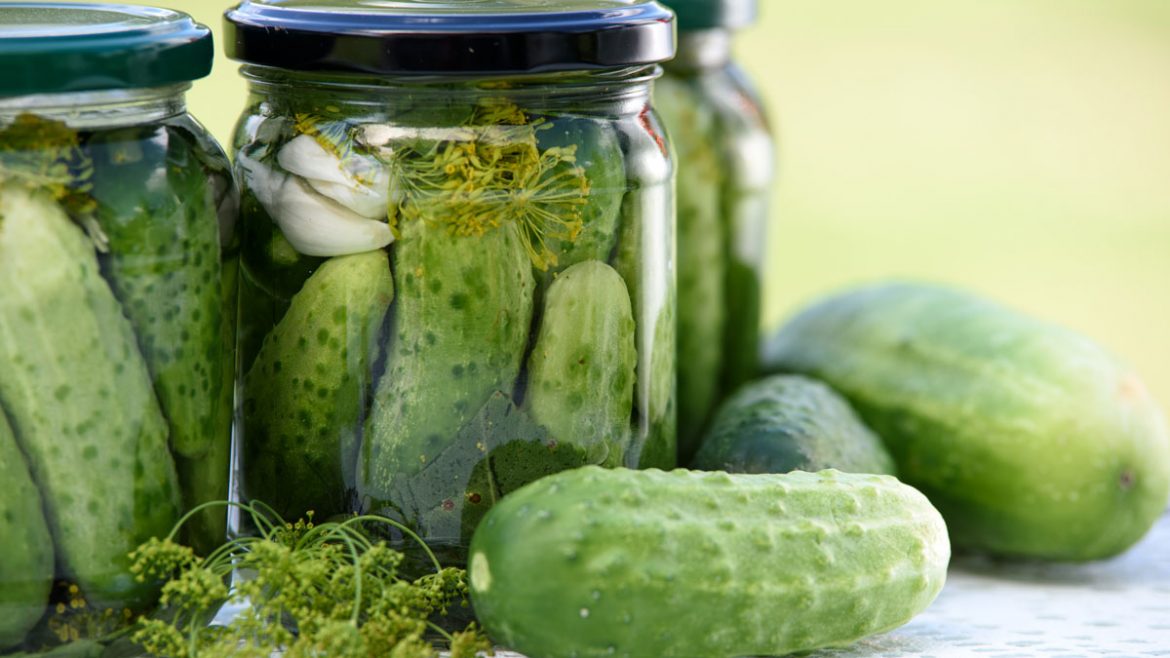
A few generations ago, preserving food from the harvest was about the only way to ensure adequate supplies of food all year. Most families spent time every summer and fall washing, prepping, and canning their fruits and vegetables, making jams and sauces, pickles and preserves, to be stored in the pantry for future use.
With the expansion of the global supply chain, fresh produce became available year-round, and canning fell by the wayside. But the past several years has seen the rise of what is known as the locavore movement—people committed to eating food grown or produced within their local community—and the old ways are returning to favor.
The locavore focus is on choosing local food sources, picked in-season at the peak of ripeness, full of flavor and nutrition, rather than food picked early and transported thousands of miles before reaching the store. In that, this shift has led to a resurgence of home canning of the summer’s local bounty.
Canning made its debut in 1809, when Frenchman Nicholas Appert, who had been tasked with finding a way to preserve food for France’s military, developed a successful procedure. His method, storing the food in glass bottles or jars then heating them to a certain temperature for a period, was successful, and changed the landscape of food preservation.
There are three general methods of home canning, each chosen depending on the type of food being canned: hot water bath canning, pressure canning, and dry canning. It is also recommended to always use the most up-to-date resource by canning experts such as Ball (ballhomecanning.com) to ensure safe practices. Canning jars, new lids with wax seals, and rust-free rings are a must for all three types of canning. Other useful supplies are a wide-mouth funnel for filling the jars, a magnetic wand to lift the lids from hot water, and a jar lifter to remove the jars from the water in which they were processed.
Many home canners begin with canning pickles as these are relatively easy and can be processed in a hot water bath. According to Iowa State University Extension, “pickling is preserving a food with acid and salt. The key to safe pickling is making sure that the acid is high enough to kill any microorganisms that can lead to spoilage or illness.” It’s recommended that vinegar with 4-6% acidity is used. In addition to pickles, some sauces are also included in this type of canning since their acidity is high enough to kill illness-causing microorganisms. Some popular canned pickles go beyond the traditional cucumber ones. These include the delicious dilly beans (pickled green beans), corn relish, pickled beets, pickled green tomatoes, pickled garlic cloves, and many, many more. Recipes can be found online or in canning books.
The procedure is generally to place the fruit or vegetable in the sterilized jar, make the brine in a pot on the stove, and pour the hot brine into the jar, place a sterilized lid on top, screw on the ring, and place in the water bath. Once all jars are in the bath, it is brought to a boil for the prescribed amount of time, then the jars are removed to a cooling rack.
Jams, jellies, and most preserves are also processed in a water bath canner since the acidity of the fruit (plus any lemon juice or other acid added) allows for enough acidity to adequately destroy microorganisms. Some favorites are raspberry jam, strawberry preserves, (served over shortcake in February are delightful!) mint jelly, strawberry rhubarb jelly, and more. The sky is the limit with summer fruit.
Foods that are not acidic enough to kill the illness- and spoilage-causing bacteria need to be pressure canned. A pressure canner or pressure cooker, along with the above-mentioned equipment, is required for this. As there is a bit more risk to this type of food preservation, use of the most recent guides is strongly recommended. It is also recommended that the pressure canner’s (or cooker’s) gauge be tested each year for accuracy by the state’s extension office. In Connecticut it is done at UCONN (The website is extension.uconn.edu.)
Meats, less-acidic sauces, eggs, soups, vegetables, and more can be canned using the pressure-canning method. A similar method to water bath canning is used, but instead of just boiling water, the pressure canner is brought to a prescribed amount of pressure for a determined amount of time, which allows for much higher temperatures, killing microbes through heat rather than a combination of acidity and heat.
Dry canning is a less frequently used method, and is appropriate for dry goods such as grains, flour, dried beans, and such. This type of canning is done in the oven using sterilized and dried jars, lids, and rings, and increases the shelf life of the dried goods stored inside. Many online resources can be found for dry canning.
With all methods, after the jars are removed from whatever vessel in which they have been processed, they are placed on a cooling rack. As they cool, they will seal with a welcome telltale popping sound, which is music to every home canner’s ears. Once cool, the jars can be stored in a cool, dark place for a year. Jars that do not properly seal should be stored in the refrigerator and used relatively quickly.
Home canning is a great way to preserve the flavor and nutrition of favorite foods, allowing them to be enjoyed all year long. Many recipes can be found online or in books at the public library and at any bookseller.
– Shaileen Kelly Landsberg




